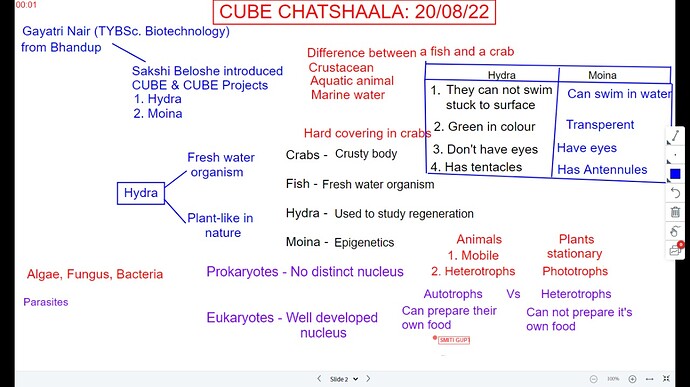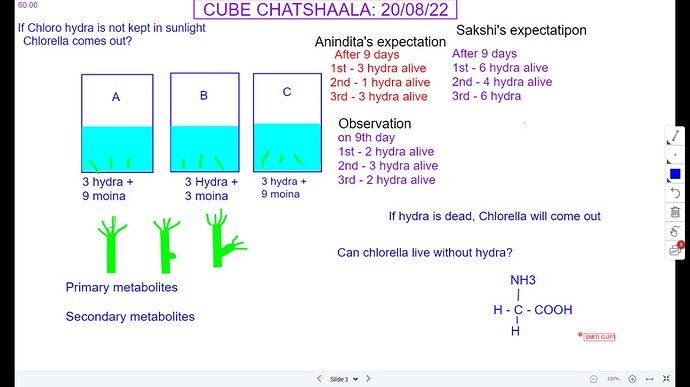![]() According to Gayatri, hydra is a fresh water organism that is plant like in nature (maybe cause they contain chlorella).
According to Gayatri, hydra is a fresh water organism that is plant like in nature (maybe cause they contain chlorella).
![]() There was a question that is hydra a fish and how is fish different from crab?
There was a question that is hydra a fish and how is fish different from crab?
What is an aquatic and a marine animal?
![]() If we compare crabs, fish, hydra and moina them crabs and moina are crustacean also moina is used for studying epigenetics. Where as Fish and hydra are fresh water organism and hydra is used to study regeneration
If we compare crabs, fish, hydra and moina them crabs and moina are crustacean also moina is used for studying epigenetics. Where as Fish and hydra are fresh water organism and hydra is used to study regeneration
![]() But how is hydra and moina different?
But how is hydra and moina different?
![]() Is hydra an animal or a plant?
Is hydra an animal or a plant?
![]() What is difference in between plants and animal?
What is difference in between plants and animal?
![]() Plants can prepare their own food using sunlight (phototrophs) and animals can not prepare so they depend on plants or other animals… So how do we classify then and where to place algae, fungus and bacteria
Plants can prepare their own food using sunlight (phototrophs) and animals can not prepare so they depend on plants or other animals… So how do we classify then and where to place algae, fungus and bacteria
![]() We here start with prokaryotes, that is organism who have no distinct nucleus and eukaryotes who have well developed nucleus
We here start with prokaryotes, that is organism who have no distinct nucleus and eukaryotes who have well developed nucleus
![]() Sakshi took 3 beakers, each with 3 hydra and test with 9 moina as feed along with replicate and control with 3 moina and them Anindita and Sakshi gave their expectation and then we saw the observation (as shown on white board) and sakshi was surprise as hydra given more moina were less in number
Sakshi took 3 beakers, each with 3 hydra and test with 9 moina as feed along with replicate and control with 3 moina and them Anindita and Sakshi gave their expectation and then we saw the observation (as shown on white board) and sakshi was surprise as hydra given more moina were less in number
![]() Then we discussed about symbiotic association between hydra and chlorella. Can chlorella live without hydra and if hydra is dead, will chlorella come out??
Then we discussed about symbiotic association between hydra and chlorella. Can chlorella live without hydra and if hydra is dead, will chlorella come out??
![]() At the end we discussed about what are primary and secondary metabolites
At the end we discussed about what are primary and secondary metabolites
Primary metabolites such as amino acids, organic acids, or nucleosides are among the simplest biotechnological products, and are commonly used as raw materials for other processes such as fermentation or chemical syntheses. They include amino acid, lactic acid, vitamins, carbohydrates, lipids, etc.
Secondary metabolites are different types of biomolecules that are produced for performing various biological functions in the plants. Steroids, alkaloids, essential oils, phenolic, etc. are a few examples of secondary metabolites.
https://www.sciencedirect.com/topics/engineering/primary-metabolite

